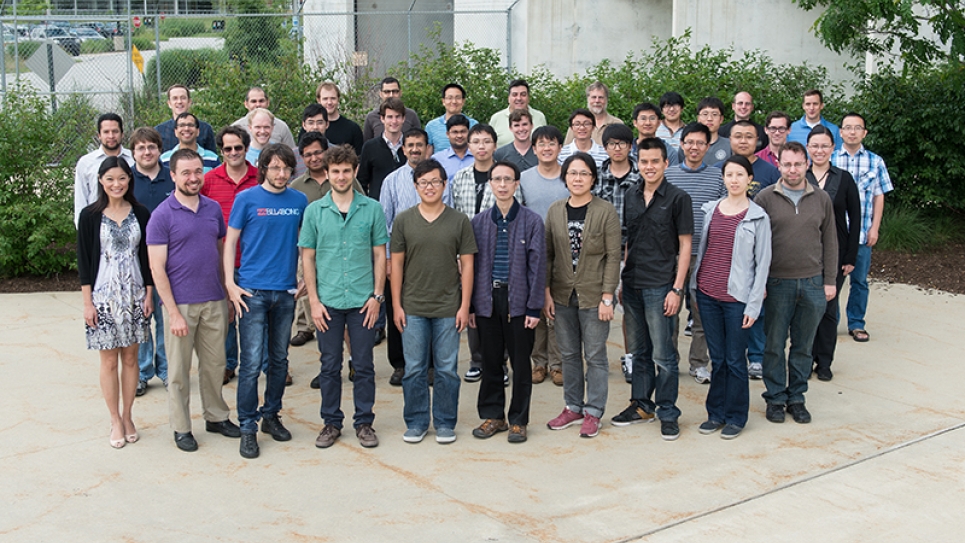
QMC workshop educates attendees on powerful tool to accelerate science
From July 14-18, the Argonne Leadership Computing Facility (ALCF), a DOE Office of Science user facility, hosted the Quantum Monte Carlo (QMC) Training Program to help grow the user base of this increasingly popular computational method for chemistry, materials science, and physics research.
QMC is one of the most accurate electronic structure methods, providing an important computational tool for solving many-body calculations for a broad range of electronic systems, from weakly bound molecules to strongly correlated solids. QMC is extremely scalable, but also requires significant computing power to run, making it a great fit for the ever-increasing power of today’s supercomputers.
“In the past, the QMC method was considered too difficult and computationally expensive for most researchers to use, but that has changed with the emergence of petascale supercomputers like Mira,” said Anouar Benali, an ALCF computational scientist who helped organize the training program. “With this event, we are equipping a new set of researchers to use QMC to accelerate scientific breakthroughs.”
The weeklong workshop, which was supported by the DOE Office of Science (Office of Basic Energy Sciences) and the National Science Foundation, hosted 33 participants including scientists, professors, and graduate students. They were introduced to the fundamentals of QMC theory as well as the latest developments in QMC methods and applications. The attendees also received hands-on training using QMCPACK, an open source QMC code, on Mira, the ALCF’s 10-petaflops supercomputer.
Sadasivan Shankar, Senior Principal Engineer and Program Leader for Materials Design at Intel, attended the QMC workshop to learn more about the method’s potential for enabling studies of realistic materials. His group at Intel uses computer-aided design as a tool to develop materials with specific nanotechnology requirements, but has not yet used QMC.
“QMC was previously a niche tool that very few used,” Shankar said. “With the amount of progress I’ve seen, I think QMC is in a 5-10-year horizon of becoming the workhorse for materials science applications.”
The ALCF currently has a few projects using QMC including an ALCC project investigating the interaction of molecules central to electrocatalytic reactions and fuel cell science, and an INCITE project working to create an extensive database of energy benchmarks for molecular systems bound by non-covalent forces, particularly hydrogen bonding and van der Waals dispersion forces.
One of the training program’s attendees, Tej Choksi, a graduate student at Purdue University, is a member of the aforementioned ALCC project, led by Purdue Associate Professor Jeffrey Greeley, who also helped organize the training program. Choksi has yet to use QMC as part of the project, but believes the workshop has prepared him to do so in the near future.
“I now believe all the hype behind QMC. I knew it would give good electronic correlations, but I didn’t truly understand how tailor-made QMC is for HPC,” said Choksi. “It’s unbelievable how close Monte Carlo simulations are to chemical accuracy—that’s the major take-home message for me.”
The event was organized by Jeongnim Kim and Paul R. C. Kent, Oak Ridge National Laboratory; David M. Ceperley, University of Illinois; Anouar Benali and Nichols Romero, Argonne National Laboratory; Miguel A. Morales, Lawrence Livermore National Laboratory; Luke Shulenburger, Sandia National Laboratories; Jeffrey Greeley, Purdue University.